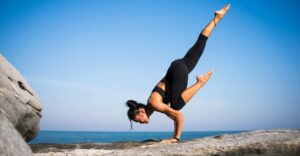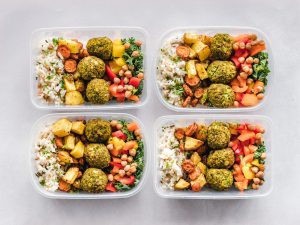As we age, vein health can decline. Exercise and nutrition are important for vein health, but knowing what to eat or how to exercise can be overwhelming and confusing. This post will provide information on improving vein health through exercise and nutrition. We will give you a detailed review of what it takes to keep your veins healthy. Also, you will learn how to recognize the symptoms of diseased veins.
Importance of maintaining vein health
Maintaining vein health is essential for a good quality of life. Veins are blood vessels that carry blood from the tissues back to the heart. When veins do not function properly, blood pools in the legs and cause disease that can affect your daily activities.
Varicose veins are the most common vein problem. This disease is characterized by twisted and bulging veins that protrude from the skin. They are generally considered cosmetic problems but can cause pain, infection, and even ulcers. Vein problems can increase the risk of more severe diseases like heart disease and stroke.
Signs of diseased veins
To improve your vein health, you need to know the signs of unhealthy veins. Although varicose veins are a widespread health problem, they are not the only symptom. Here are several indicators of diseased veins:
- Swelling, burning, and itching of the skin.
- Pain and heaviness that worsens after long periods of sitting or standing
- Changes in the color and texture of the skin
- Muscle cramps and spasms
- Bruising or hematomas that form easily
You can do many things to improve the health of your veins. Small lifestyle changes, such as exercising regularly and eating a balanced diet, will help you maintain the health of your veins. Additionally, if you are looking for more specialized care, you may want to visit a varicose veins clinic.
Exercise for vein health
Exercise can play an essential role in improving vein health. Exercise increases blood flow, which helps strengthen veins, especially those in the legs. Some types of exercise can even help prevent diseased veins.
Also, exercise can help reduce the risk of developing varicose veins by keeping weight under control. Excess weight contributes to varicose veins, especially in the legs, because more pressure is placed on them.
In general, exercises that involve leg movement improve vein health. Muscle contractions are one of the factors that cause blood to flow through the blood vessels. Thus, moving the legs promotes blood flow and prevents blood from concentrating in the legs.
Some specific exercises are especially helpful in improving vein health, like:
- Walking: It is a low-impact exercise and an excellent way to improve your veins. It will help you strengthen your muscles, increase your heart rate and improve blood circulation.
- Running: It strengthens your leg muscles while also supporting adequate blood circulation. In addition, running increases your heart rate and enhances your fitness.
- Swimming: When swimming, your muscles work against the resistance of the water, which helps strengthen them. Also, floating in water helps reduce pressure on veins and leg muscles, improving venous health.
- Cycling: It is a cardiovascular activity that improves blood circulation and strengthens leg muscles. When pedaling, leg muscles work against resistance, which helps support them and improve circulation. However, cycling can also adversely affect venous health if you sit for a long time. This can lead to increased pressure in the veins of the legs. Thus, you must take breaks and walk when cycling.
- Yoga: Some yoga postures can help improve circulation in the legs. Standing and balancing postures involve strengthening the legs and feet muscles, which helps improve blood circulation. Besides, some yoga postures also involve movements that promote blood flow and enhance leg flexibility. Yoga also includes breathing and meditation techniques that can help reduce stress and anxiety, positively affecting venous health.
Exercising will help strengthen your veins, improve your health and reduce your risk of developing vein disease. When exercising, follow the instructions of a trained instructor and avoid any postures that may cause pain or discomfort.
Nutrition for vein health
Besides exercise, nutrition also plays a vital role in vein health. Some foods and nutrients can help improve blood circulation and prevent vein problems. Following a balanced diet helps strengthen veins and decreases the risk of developing vein disease.
Some dietary recommendations for improving vein health include:
- Vegetables and fruits are rich in vitamin C. Vitamin C is a potent antioxidant that strengthens vein walls and prevents blood clots from forming. You can find this vitamin in citrus fruits, strawberries, bell peppers, and broccoli.
- Nuts. They are rich in vitamin E and magnesium, which improve blood circulation. Some nuts are walnuts, almonds, and pistachios.
- Foods rich in omega-3. This compound reduces inflammation and blood circulation problems. Some foods rich in omega-3 are fish (tuna, salmon, sardines), flax seeds, chia, and sesame.
- Whole grains, foods rich in fiber. Fiber helps maintain healthy and regular digestion, which can help prevent fluid accumulation in the legs and reduce pressure in the veins.
- Foods rich in potassium. Potassium is a mineral that helps control blood pressure and improve cardiovascular health. You can find this compound in bananas, melon, tomatoes, spinach, and avocado.
- Lean proteins. They contain iron, an essential mineral for producing red blood cells and transporting oxygen in the blood. Some lean proteins are fish, chicken, and turkey.
- Olive oil. It is rich in monounsaturated fatty acids, which help reduce the risk of heart disease and improve cardiovascular health.
A balanced and varied diet helps strengthen veins and will help you maintain a healthy weight. Consult a nutritionist for further recommendations and learn the proper portions of each food.
Other vein health tips
There are other ways to improve the health of your veins. Here are some tips:
- Maintain a healthy weight. Excessive weight puts more pressure on your legs and feet, encouraging conditions such as varicose veins.
- Reduce your caffeine intake. Too much caffeine can cause an increase in blood pressure and make veins work harder.
- Wear compression stockings. This type of stocking exerts controlled pressure on the legs. They promote proper blood circulation and prevent swelling of the veins.
- Avoid wearing shoes with heels. Wearing high heels causes greater pressure on the veins of the legs and promotes the appearance of varicose veins. It is recommended that you wear comfortable shoes that maintain the typical posture of your legs and feet when walking.
- Avoid stress. Stress causes the production of hormones that compress the blood vessels, making it difficult for blood to flow through them. Inadequate blood flow worsens symptoms of vein disease.
- Avoid long periods of sitting or standing. Lack of movement causes blood to concentrate in the legs and feet. This concentration can cause vein walls to deform and varicose veins to develop.
- Stay hydrated. Drinking enough water promotes proper blood flow, preventing swelling of the veins.
Conclusion
Following these tips will help you maintain the health of your veins. If you have any concerns about your vein health, you must consult a doctor for proper diagnosis and treatment. By incorporating exercise and diet into your daily routine, you can take steps to protect your vein health.








